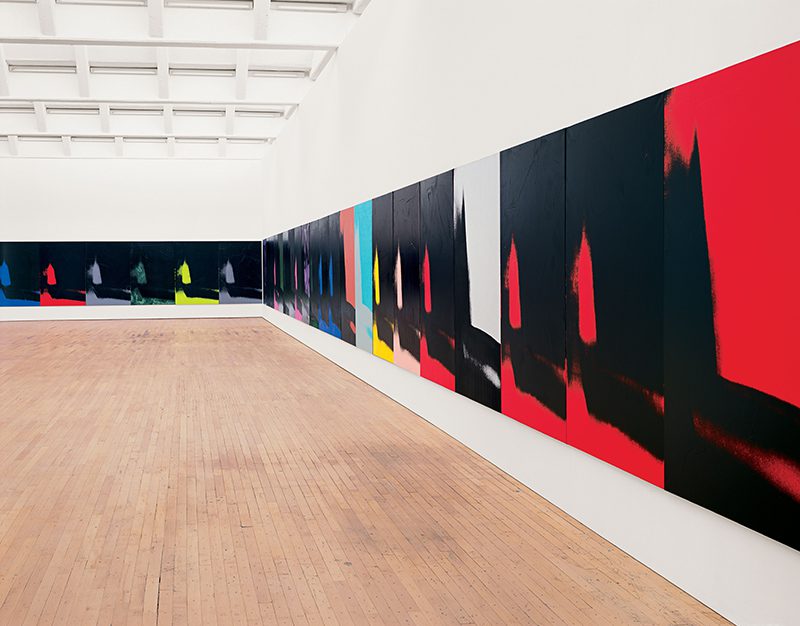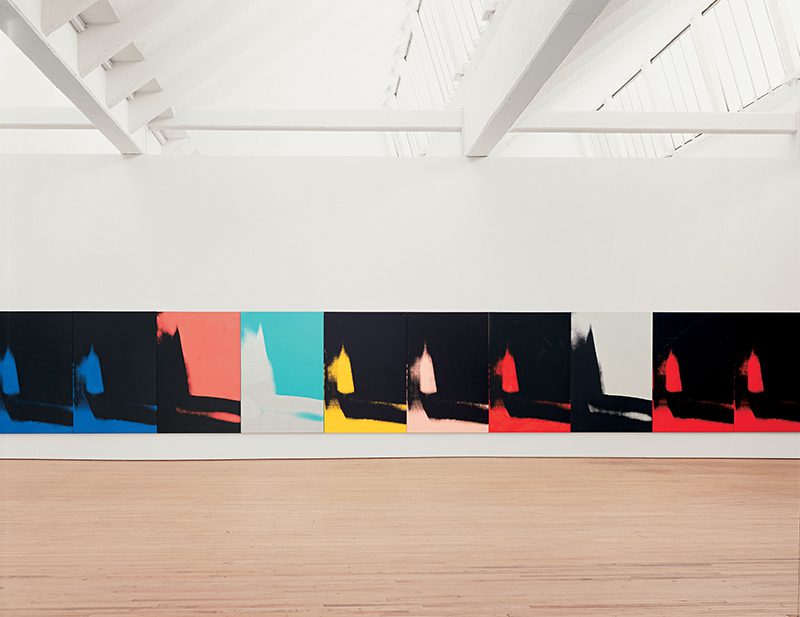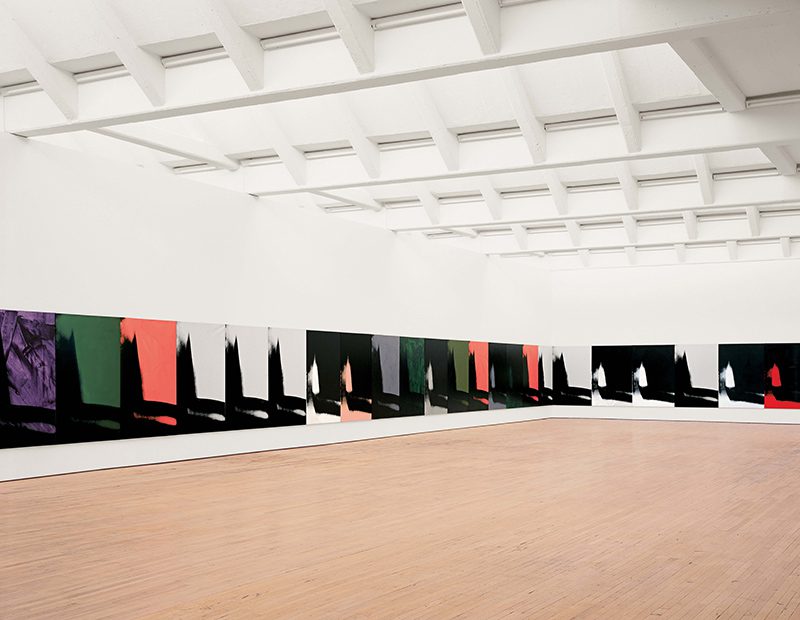ART CITIES:Bilbao-Andy Warhol
 In 1978-79 Andy Warhol produced “Shadows”, a monumental, 102-part series of silkscreened canvases. The work’s internal compositions are culled from photographs of shadows taken in The Factory, his studio in New York. In Shadows, Warhol extended his long-standing interest in seriality and repetition while forgoing the cultural icons and commodity forms that most often populate his art.
In 1978-79 Andy Warhol produced “Shadows”, a monumental, 102-part series of silkscreened canvases. The work’s internal compositions are culled from photographs of shadows taken in The Factory, his studio in New York. In Shadows, Warhol extended his long-standing interest in seriality and repetition while forgoing the cultural icons and commodity forms that most often populate his art.
By Efi Michalarou
Photo: Guggenheim Bilbao Archive
The complete series of the 102 canvases are on view at the Guggenheim Museum Bilbao. The “Shadows” formalized earlier explorations with Abstraction, seen the previous year in the “Oxidation”, “Rorschach”, and “Camouflage” paintings. In contrast to the “Oxidation” paintings, achieved through a process of staining in which a canvas coated in copper reacted to the acidity of urine spilled or dripped on it, the “Shadows” panels are silkscreened canvases. To understand the radical implications these works , one must begin with the work’s form: the “Shadows” series was conceived as one painting in multiple parts, the final number of canvases determined by the dimensions of an exhibition space. In its first public presentation, only 83 canvases were shown. They were installed edge to edge, a foot from the floor, in the order that Warhol’s assistants, Ronnie Cutrone and Stephen Mueller, hung them. The canvases, which were primed and coated with acrylic paint prior to the printing of the image, show Warhol’s signature palette of bright hues with cheerful excess. While the color palette used for the grounds of the “Shadows” includes more than a dozen different hues, certain colors that are characteristic of his larger body of work are present. Unlike the surfaces of earlier paintings, in which thin layers of rolled acrylic paint constituted the backgrounds onto which black pixelated images were silkscreened, the backgrounds of the “Shadows” canvases were painted with a sponge mop, whose streaks and trails add “gesture” to the picture plane. Even though Warhol referred to his Abstractions as “disco décor”, the series displayed together makes a much more philosophical, spatially aware collection that goes beyond sheer aesthetics.
Info: Guggenheim Bilbao, Abandoibarra Etorb. 2, Bilbao, Duration: 26/2-2/10/16, Days & Hours: Tue-Sun 10:00-20:00, www.guggenheim-bilbao.es


